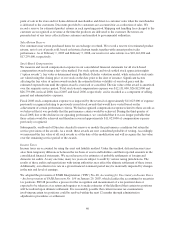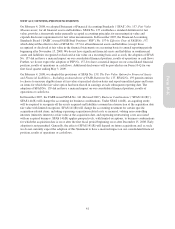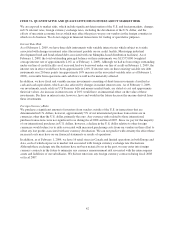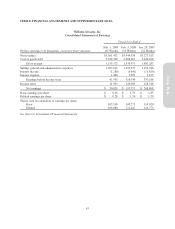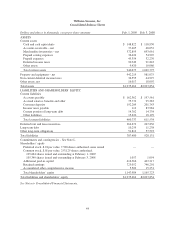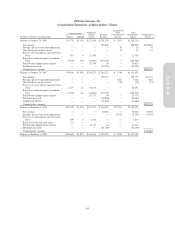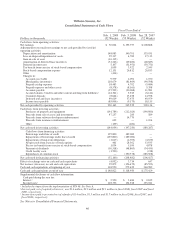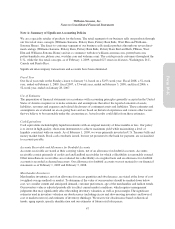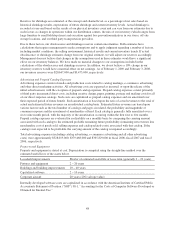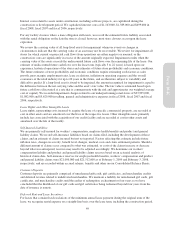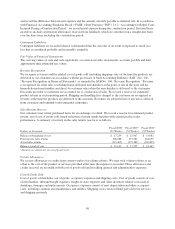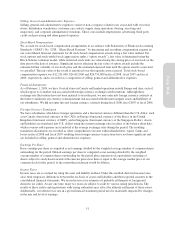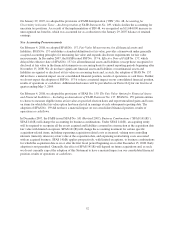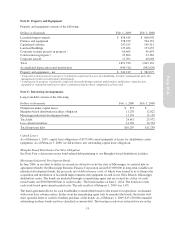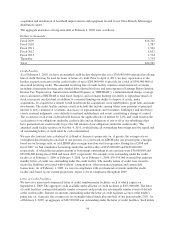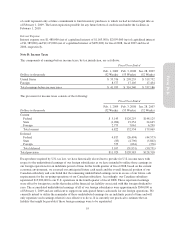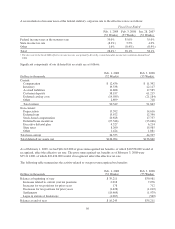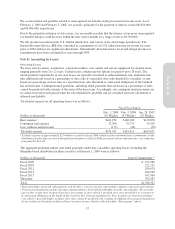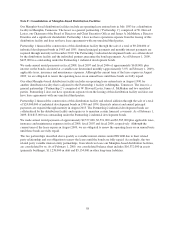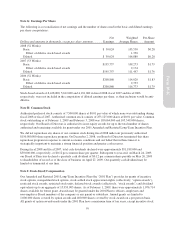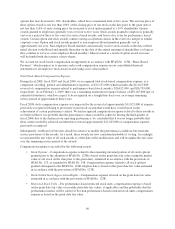Pottery Barn 2008 Annual Report Download - page 62
Download and view the complete annual report
Please find page 62 of the 2008 Pottery Barn annual report below. You can navigate through the pages in the report by either clicking on the pages listed below, or by using the keyword search tool below to find specific information within the annual report.
and record the difference between rent expense and the amount currently payable as deferred rent. In accordance
with Financial Accounting Standards Board (“FASB”) Staff Position (“FSP”) 13-1, “Accounting for Rental Costs
Incurred During a Construction Period,” we record rental expense during the construction period. Deferred lease
incentives include construction allowances received from landlords, which are amortized on a straight-line basis
over the lease term, including the construction period.
Contingent Liabilities
Contingent liabilities are recorded when it is determined that the outcome of an event is expected to result in a
loss that is considered probable and reasonably estimable.
Fair Value of Financial Instruments
The carrying values of cash and cash equivalents, accounts receivable, investments, accounts payable and debt
approximate their estimated fair values.
Revenue Recognition
We recognize revenues and the related cost of goods sold (including shipping costs) at the time the products are
delivered to our customers in accordance with the provisions of Staff Accounting Bulletin (“SAB”) No. 101,
“Revenue Recognition in Financial Statements” as amended by SAB No. 104, “Revenue Recognition.” Revenue
is recognized for retail sales (excluding home-delivered merchandise) at the point of sale in the store and for
home-delivered merchandise and direct-to-customer sales when the merchandise is delivered to the customers.
Discounts provided to customers are accounted for as a reduction of sales. We record a reserve for estimated
product returns in each reporting period. Shipping and handling fees charged to the customer are recognized as
revenue at the time the products are delivered to the customer. Revenues are presented net of any taxes collected
from customers and remitted to governmental authorities.
Sales Returns Reserve
Our customers may return purchased items for an exchange or refund. We record a reserve for estimated product
returns, net of cost of goods sold, based on historical return trends together with current product sales
performance. A summary of activity in the sales returns reserve is as follows:
Dollars in thousands
Fiscal 20081
(52 Weeks)
Fiscal 20071
(53 Weeks)
Fiscal 20061
(52 Weeks)
Balance at beginning of year $ 17,259 $ 15,467 $ 13,682
Provision for sales returns 206,288 277,281 264,630
Actual sales returns (213,405) (275,489) (262,845)
Balance at end of year $ 10,142 $ 17,259 $ 15,467
1Amounts are shown net of cost of goods sold.
Vendor Allowances
We receive allowances or credits from certain vendors for volume rebates. We treat such volume rebates as an
offset to the cost of the product or services provided at the time the expense is recorded. These allowances and
credits received are recorded in both cost of goods sold and in selling, general and administrative expenses.
Cost of Goods Sold
Cost of goods sold includes cost of goods, occupancy expenses and shipping costs. Cost of goods consists of cost
of merchandise, inbound freight expenses, freight-to-store expenses and other inventory related costs such as
shrinkage, damages and replacements. Occupancy expenses consist of rent, depreciation and other occupancy
costs, including common area maintenance and utilities. Shipping costs consist of third party delivery services
and shipping materials.
50


